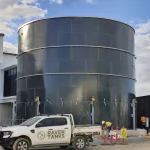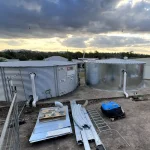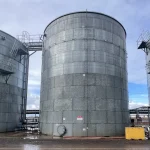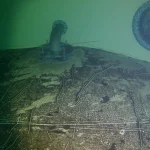When choosing a water storage tank, understanding the correct dimensions is crucial. The size, shape, and capacity directly impact installation requirements, water volume, and long-term usability. This guide explains the most common water storage tank dimensions used in both residential and industrial applications.
Why Tank Dimensions Matter
The dimensions of a water storage tank determine how much water it can hold and where it can be installed. Too large, and it might not fit in your available space. Too small, and it won’t meet your water demand. Choosing the right size ensures:
- Proper water supply for your household or facility.
- Compliance with local regulations.
- Cost-effective water storage management.
Residential Water Storage Tank Dimensions
Residential water tanks are typically used for rainwater harvesting, garden irrigation, or emergency storage. These tanks come in compact sizes to suit smaller spaces.
| Capacity | Diameter (mm) | Height (mm) | Common Use |
|---|---|---|---|
| 500L | 800 | 1,200 | Garden, toilet flushing |
| 1,000L | 1,000 | 1,500 | Small household |
| 3,000L | 1,500 | 2,000 | Full home rainwater use |
| 5,000L | 1,800 | 2,100 | Off-grid water storage |
Most residential tanks are made from polyethylene or slimline designs to save space.
Industrial & Commercial Tank Dimensions
Industrial water tanks are designed for high-capacity storage and can be custom-built. They’re used in agriculture, mining, manufacturing, and fire protection systems.
| Capacity | Diameter (mm) | Height (mm) | Material Options |
|---|---|---|---|
| 10,000L | 2,400 | 2,400 | Steel, poly |
| 50,000L | 4,500 | 3,000 | Steel, FRP |
| 100,000L+ | 6,000–10,000 | 3,000–4,000 | Steel panel, concrete |
Custom tank dimensions are available depending on site space and application.

Common Water Tank Materials
The material you choose affects the durability, weight, chemical resistance, and cost of your tank. Here are the most common water tank materials in Australia:
Polyethylene (Plastic):
- Lightweight, affordable, and corrosion-resistant.
- Ideal for residential use and rainwater harvesting.
- UV-stabilised for outdoor installation.
Steel (Galvanised or Stainless):
- Strong and durable.
- Suitable for large-capacity or industrial tanks.
- Can be lined internally for potable water.
Concrete:
- Long-lasting and excellent for underground installations.
- Heavy and requires structural preparation.
- High thermal insulation for stable water temperatures.
Fibreglass / FRP (Fibre Reinforced Plastic):
- Chemical-resistant and low maintenance.
- Popular in mining, agriculture, and harsh environments.
- Customisable in size and shape.
At Raven Tanks, we offer tanks built from all the above materials, depending on your specific requirements.

How to Choose the Right Tank Dimensions
When selecting the ideal tank size, consider the following:
- Available footprint: measure the space on-site.
- Water usage volume: calculate daily or weekly needs.
- Installation access: ensure enough room for delivery and positioning.
- Height restrictions: check roof clearance or underground limits.
If unsure, consulting a tank specialist can save time and prevent expensive mistakes.
Need Custom Dimensions or Material Advice?
At Raven Tanks, we design and install water storage tanks tailored to your exact specifications. Whether you need a compact poly tank or a massive steel panel solution, we provide expert advice and quality workmanship.
Contact us today at 1800 907 834 to get a quote on water tanks in any size — fast, reliable, and built to last.










